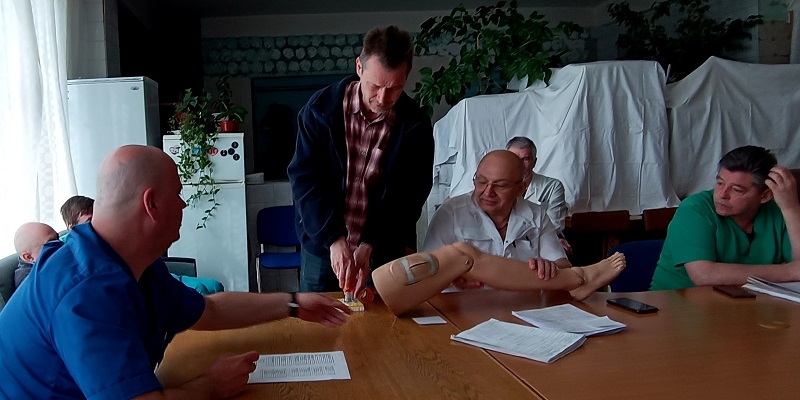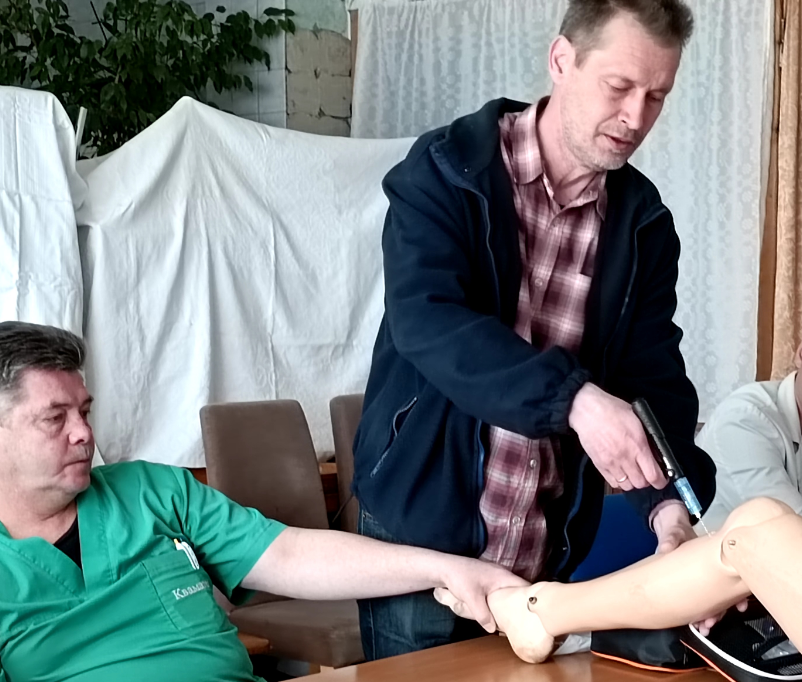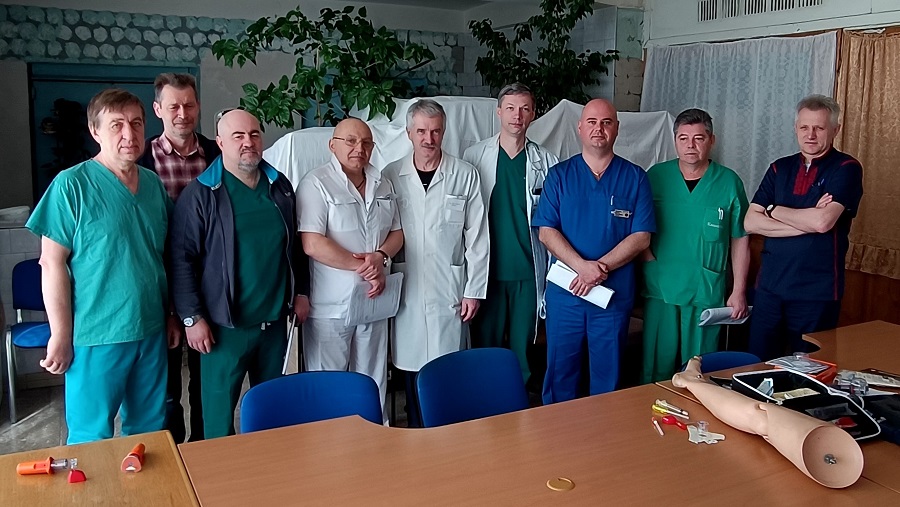Intraosseous infusion is a modern solution to the problem of vascular access in critical situations. In medical practice, there are clinical situations in which the patient needs vascular access. The quality of the provided medical care, and often the life of a person, depends on its availability. According to statistics, it takes more than five minutes to establish intravenous access for 5-10% of adult patients and 25% for children. About 6% of cases are such that vascular access is unattainable. An alternative option is intraosseous access.

In many European countries and the United States, emergency medical protocol calls for intraosseous infusion as a second option for vascular access if the intravenous option is not achieved on the third or fourth attempt or cannot be achieved within 90 seconds.

Intraosseous infusion allows achieving results within the first minute on the first attempt in 92-96% of cases.
In December 2013, Valerii Kuzmin, Associate Professor of the Department of Disaster Medicine and Military Medical Training of the Shupyk National Healthcare University of Ukraine, held an unscheduled master class on mastering intraosseous access for infusion therapy for the staff of the clinical base - the Polytrauma Department of the Kyiv City Clinical Emergency Hospital.

This method may be especially useful for those specialists who may be involved in the provision of emergency medical care under the conditions of mass cases at the pre-hospital stage, including in the war zone.
The method of intraosseous access is taught in the educational process of the department: during lectures, seminars and practical classes in thematic improvement cycle



